
COCOMO Model
OR
COCOMO-1 Model
OR
COCOMO' 81 Model
COCOMO(constructive COst MOdel) what purpose by "Boehm[1981]". According to him, software cost estimation should be done through three stages.
Basic COCOMO, Intermediate COCOMO, complete COCOMO
Modes of development:
Boehm proposed that there can be three modes of software development project based on development complexity. He considered software size innovation deadline / constraint deadline and development environment and gave three modes which were
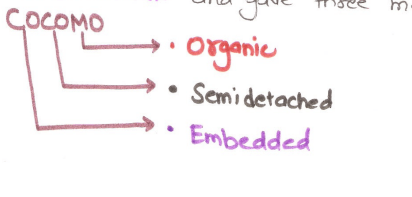
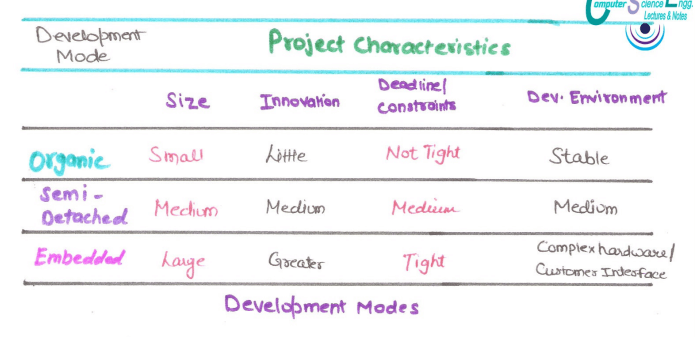
COCOMO model depends on two main equations:
1. Development Efforts:

MM=a1*(KLOC)a2*PM
Based onMM- man month (MM)/ person month(PM)/ staff month is one month of efforts by one person. COCOMO consider 152 hours per person month. It may vary according to organization by 10% to 20%.2. Effort and Development Time(TDEV)

TDEV=Bb1*(effort)b2*Months
Tdev is estimated time to develop the software, expressed in months.
a1,a2,b1,b2 are constant for each category of software products,
Basic COCOMO
Basic COCOMO applies the parameterized equation without much detailed consideration of project characteristics.
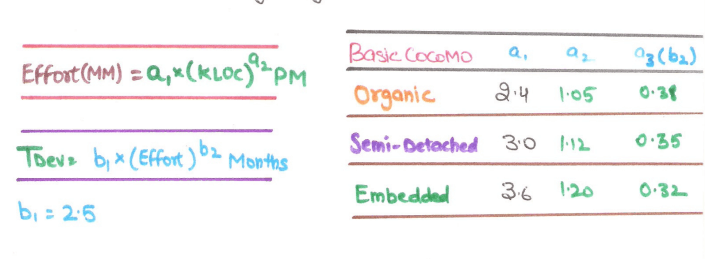
So estimation development Efforts
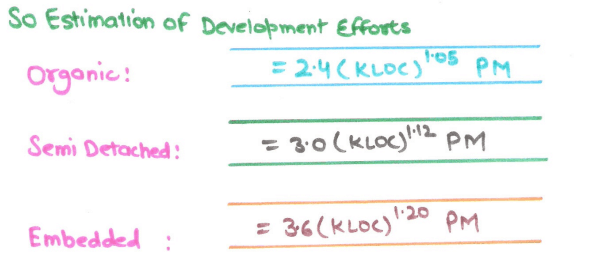
so estimation of Development Time
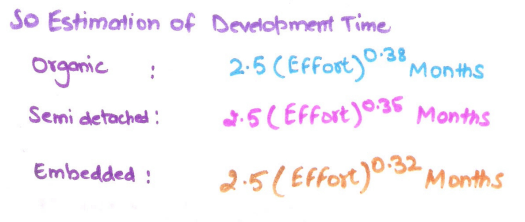
Basic COCOMO:Person-month curve
The effort estimation is expressed in units of person- months(PM). It is the area the person month plot.
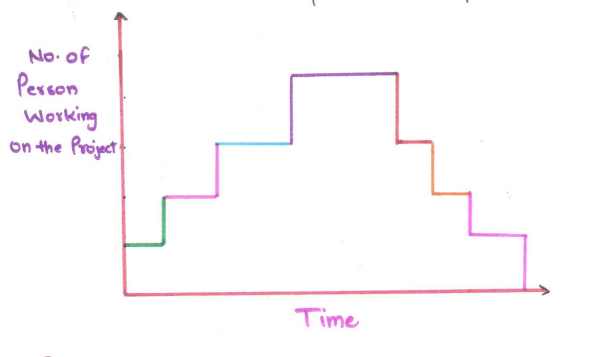
Points to be noted:
It should be carefully noted that an effort 100 PM does not mean that 100 person should work for one month nor does it mean that one person should be employed 100 months, but it denotes the area under person-month curve .
In this curves we see that as project progresses the number of person working on it get increases and as project reached near to its end the number of person become decreases. Because role of every person is specific.
Intermediate COCOMO
The same basic equation for the model is used, but fifteen cost drivers are related on a scale of ' very low' to ' very high' to calculate the specific effort multiplier and each of them returns an adjustment factor which multiplied yields in in the total EAF (Efforts Adjustment factor). Only a1 is slightly different.
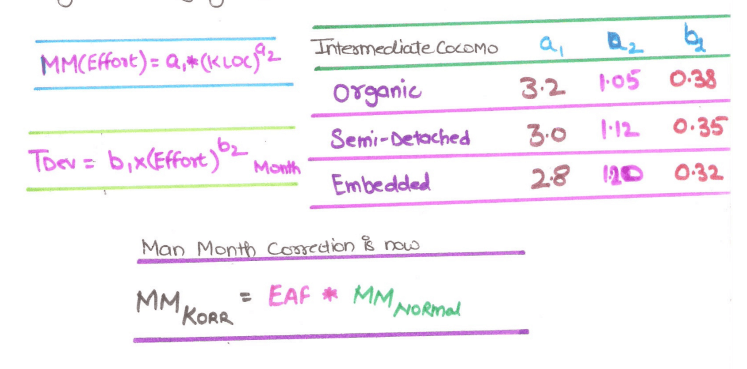
Advanced or Detailed or Complete COCOMO
Both Basic and Intermediate COCOMO model consider a software product as a single HOMOGENEOUS entity. However most large systems consist several sub-system in which some maybe organic, some may be semi-detached and some maybe Embedded.
Example a Distributed Management Information system(MIS) Which consists
Database path,
graphical user interface part,
communication part.
The communication can be considered as embedded software. The Database part could be semi-detached software and GUI part could be organic.
All of three cost can be estimated separately, and summed up to give the overall cost of the system.
23-cocomo MODEL- Software Engineering Tutorials In HINDI
CLICK HERE TO Download This PDF NOTES
